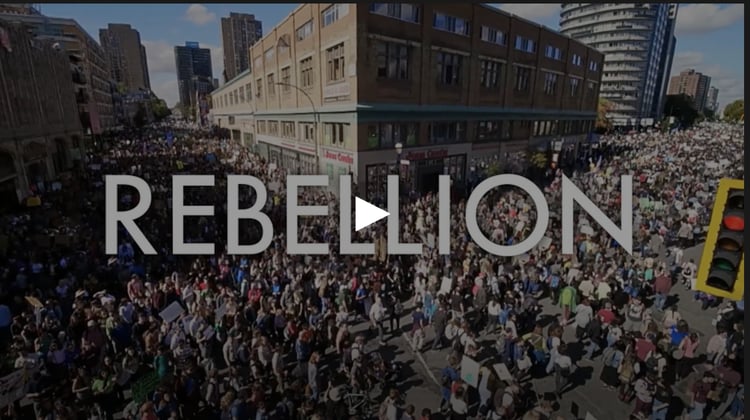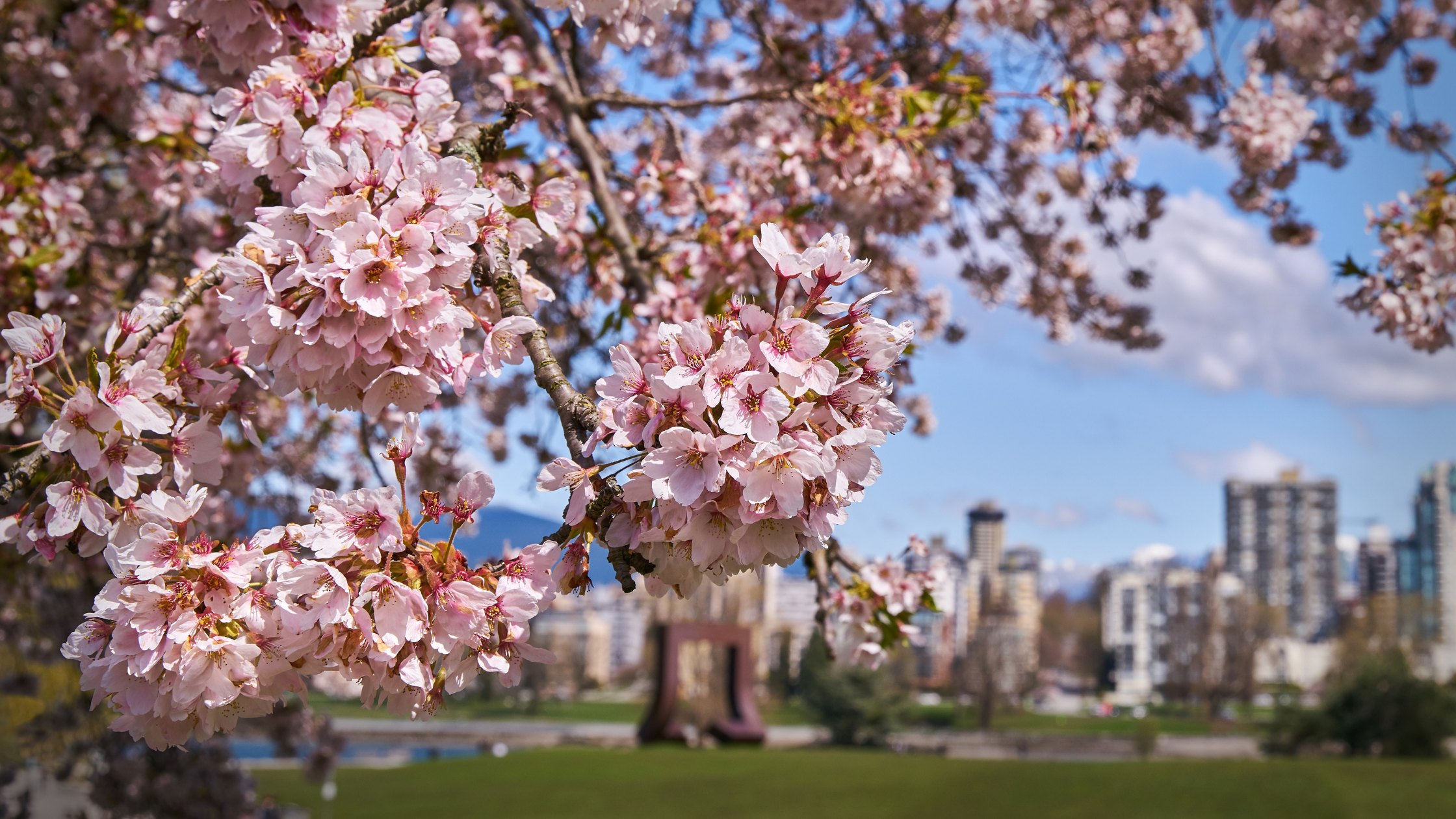Celebrated annually on April 22, Earth Day is a global event to create awareness for environmental conservation and to encourage people to be more environmentally conscious and act to reduce environmental impacts. More than 6 million Canadians participate in Earth Day celebrations and events each year. In honour of this day, we have compiled a list of Canadian resources to share in your classroom, encouraging students to create positive environmental change in your communities!
From 'The Nature of Things with David Suzuki' to 'The History of Earth Day' here are teacher resources to celebrate Earth Day in Canada with your classroom.
History of Earth Day
Earth Day first started over 50 years ago, on April 22, 1970 when millions of Americans took to the streets to voice their concern over the treatment of our planet. By 1990, Canadians began to recognize the secular holiday leading to the establishment of Earth Day Canada (EDC), a national environmental charity which overlooks Earth Day events and supports Canadians in celebrating the largest environmental event worldwide. Since then, Earth Day has become an international phenomenon where more than one billion people in over 190 countries participate in conservation and sustainability activities each year.
What is Climate Change?
Climate change is the change of usual weather or temperature found in a certain location on earth. Over the past century the earth’s climate has changed unusually fast. Scientists believe that it is human activity – such as plugging in electric devices, driving cars, and cooling homes – that is causing the rapid change. Each of these activities rely on energy sources such as natural gas, oil, and coal which release carbon dioxide (CO2) into the atmosphere. When CO2 and other greenhouse gases trap heat that would otherwise escape Earth’s atmosphere, the planet’s temperature rises producing an effect otherwise known as global warming.
Activity Idea: Have your students evaluate their personal impact on climate change with this footprint calculator. Students will input generic details about how they live and learn how many planets they would need if everybody lived like them! Students will also be able to see their personal overshoot day which indicates the date in which the student would have used as many resources from nature as Earth can renew in the entire year.
Impact of Climate Change on our Water Systems
More than 70 per cent of the earth’s surface is covered with water, and most of this water is found in the oceans. As Grade 8 students learn about the earth’s water systems, use this education guide to see how climate change impacts Canada’s current water systems. In addition, take time to further educate your class about contaminated water issues that Canadian Indigenous populations face on reserves. Be sure to also introduce your students to Autumn Peltier, a world-renowned Anishinaabe water-rights activist fighting to eradicate pollution and provide clean water to all Indigenous populations.
Activity Idea (cost associated): Conduct a virtual field trip to Canada’s Science and Technology Museum to participate in a climate change educational workshop! Their programs encourage students to think about climate change adaptation and mitigation through a variety of activities. Students will develop a better understanding of the factors that contribute to climate change, and the effects of climate change on society, the economy, and the environment.
Climate Change & Agriculture
Check out Episode 3 - Agriculture of the 2050: Degrees of Change podcast exploring how climate change not only will shape the future of our country but, more specifically, the farming and agriculture industry. Innovations in farming techniques have brought about huge increases in crop yields and have sustained a global population that has quadrupled in size over the span of one century. As the human population continues to grow, however, meeting the demand for accelerated agricultural productivity is likely to be far more difficult than it has been so far. Global climate change is destabilizing many of the natural processes that make modern agriculture possible. Yet modern agriculture itself is also partly responsible for the crisis in sustainability. Many of the techniques and modifications on which farmers rely to boost output also harm the environment. Check out this article describing methods in which intensive agriculture threatens the precarious balance of nonagricultural ecosystems.
Activity Idea: Agriculture is a necessary activity that allows us humans to meet our needs for food, fuel, fiber and even medicine. But what kind of impact does cultivating land and raising livestock have on the environment? Use this activity kit from our partner the Agriculture & Food Museum to help students understand the less obvious connections between our everyday lives and farming, while developing critical thinking and research skills.
Canadian Climate Change Activists
Over the past few years, millions of children and teenagers have brought climate change initiatives to the forefront of our society, in what many now call a climate Rebellion! Use this documentary narrated by famous Canadian environmentalist David Suzuki to inspire your students to become active in environmental change. Afterwards, encourage students to learn about young Canadian environmentalists already making a significant impact on our planet. Learning about the work of youth can give your students new ideas for how to protect the environment as well as encourage them to start thinking about solutions to problems they can already help solve at their age.
Brightspark: Earth Day Kahoot!
After watching the above videos, challenge your class to a Kahoot! game to reinforce the key facts of environmental conservation and Earth Day in Canada.
- Go to Kahoot.com
- Click "login" or "create account" on the top right
- Once logged in, go to the discover tab next to the home button
- In the search field, enter “Brightspark: Earth Day”
- Click the “Brightspark: Earth Day” Kahoot
- Hit “play” and select either Teach (live game where everyone plays at the same time) or Assign (students play at their own pace with a deadline attached to it)
- Send the link and pin to your students (students do not need an account to play)
How can you Help?
This year’s official Earth Day theme is Restore Our Earth, which focuses on natural processes, emerging green technologies, and innovative thinking that can restore the world’s ecosystems. It is up to each and every one of us to Restore Our Earth, not simply because we care about the natural world, but because we live on it. We all need a healthy Earth to support our jobs, livelihoods, health, and happiness. Here are some activities your classroom can do to contribute this year:
Organize a Cleanup – Imagine if everyone went outside today and picked up all the trash that they found on a short walk. How much litter do you think we would be able to collect? Organize a cleanup with your class and challenge yourselves to pick up as much garbage in your community as possible! You can register your cleanup here, getting your event on the official Earth Day cleanup map.
Take a Quiz - How much do your students know about biodiversity or what the ocean has to do with the air we breathe? Have your students test themselves with these quizzes from the United Nations and Conservation International. Afterwards, encourage your students to research and learn about environmental issues on their own.
Make a Pledge - The choices we make today will create the world of tomorrow… let’s pledge to do our part to leave it greener than we found it! As a class, prioritize some environmental initiatives you feel are important and brainstorm ways to take action! Use these ideas as inspiration or submit your own “Act of Green” to the official Earth Day website.
If you are interested in visiting some of Ontario’s leading environmental museums, consider taking your class on a trip to Ottawa to provide students with a more immersive experience.
![Celebrating Earth Day in Canada [Classroom Resources] featured image](https://www.brightsparktravel.ca/hubfs/BSCA/Blog/4321Z_ecology%20x%201920.jpg)






